Annie Le Santo examines paintings looking outward and what we may learn from them
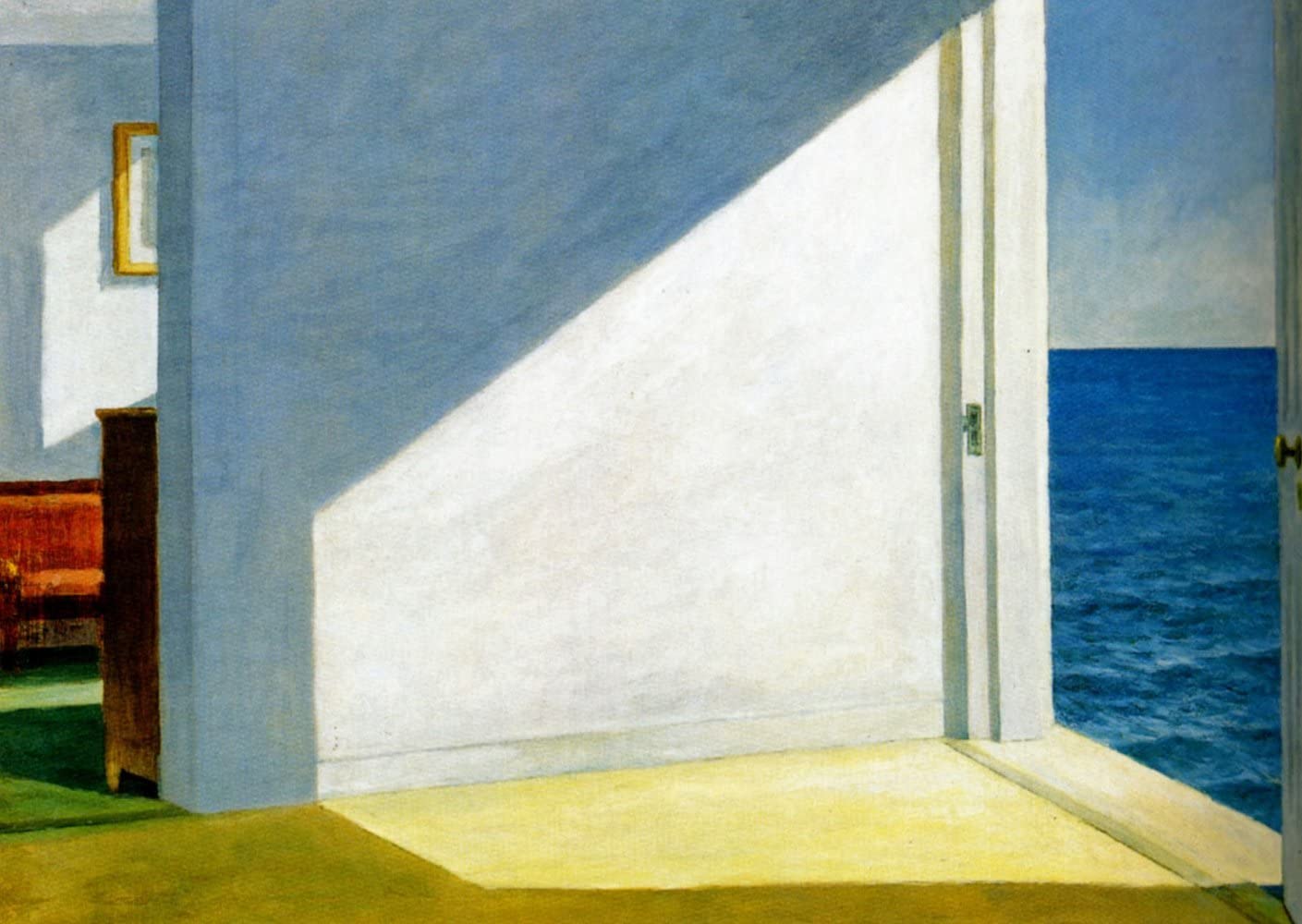
The sight of our windows viewed from the inside, is something we have likely become more familiar with than we ever thought we would. Previously an unremarkable feature of our interior lives, they now hold a new significance. It’s possible we are noticing new things about the view that they frame, peering out to observe (or judge) the social distancing efforts of the people outside of them, or finally realising it’s time to get some new curtains or just wipe down the sill. The point is, never before have we had a such a collective sense of ‘being within and looking out’. However, like nearly everything, this is not a perspective that has gone unexplored by artists. What can we recognise through revisiting paintings of windows by some of the world’s most celebrated artists? How do they resonate with the time we are living in now?
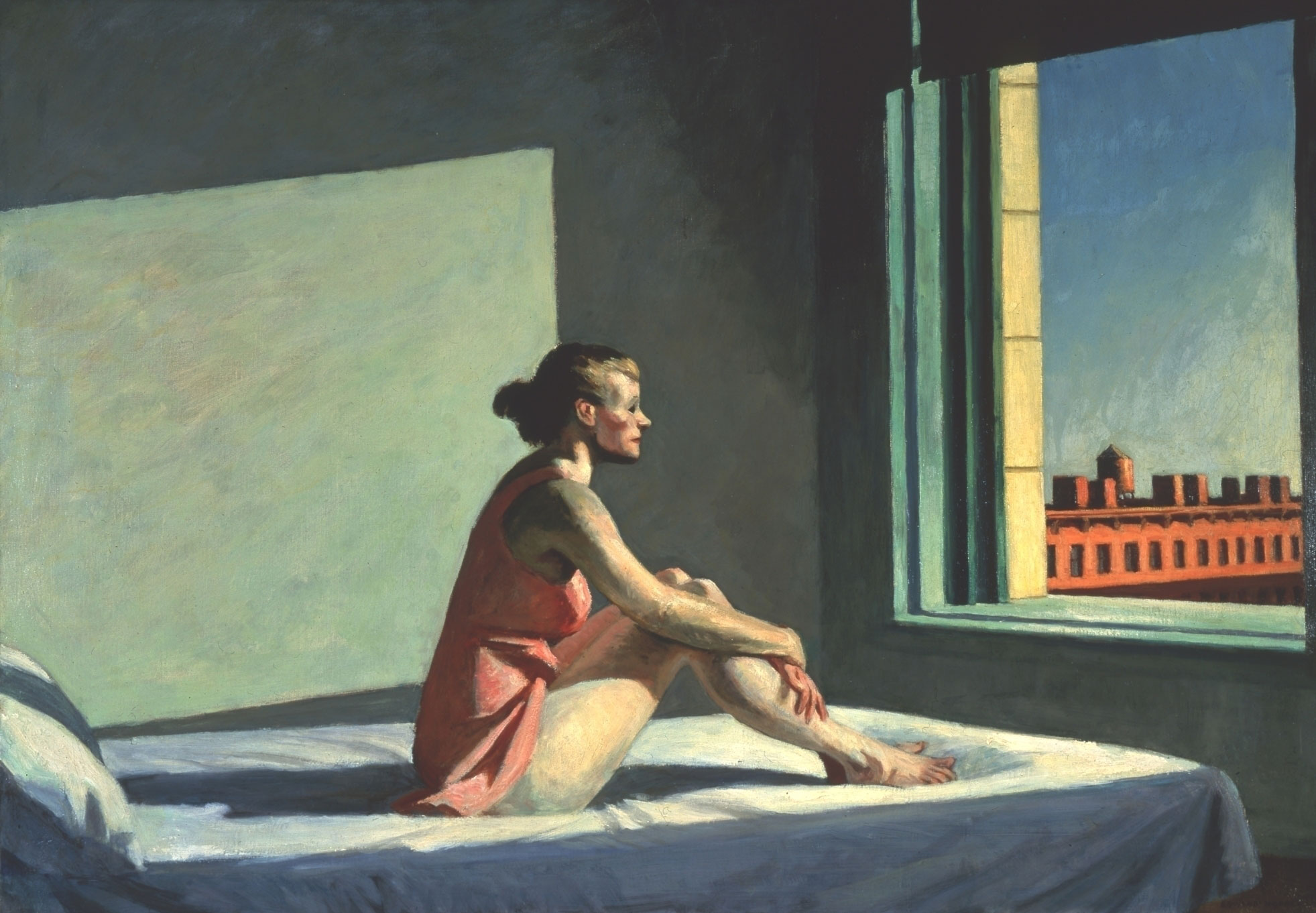
Morning Sun
Edward Hopper’s paintings are soaked in stillness. His figures sit, stand or lurk with an almost virtual presence. If they were Sims, they’d be idly waiting for their next instruction. It’s not difficult to imagine them living through a lockdown or practising social distancing, especially the lady in Morning Sun, painted by Hopper in 1952. The sun is up. Alone in a room absent of any personal belongings, she gazes out of the window. Rooftops hang in balance, like an opening shot of a sitcom stuck on pause. The light casts distorted shapes on the wall as the warmth tries to seduce her to go out, but today there is no ‘out’ to go to. She knows the Earth is spinning – because it has to be – but she feels no movement. Was this always the case? Panic prickles at the thought, but it’s ok. She replaces it with another: The sun will come up again tomorrow. She is one revolution closer to laying on the grass with the sun on her skin, no glass between her and it.
Particularly fascinated with the American urban scene, many of Hopper’s realist paintings summon these feelings of isolation and loneliness, lending themselves to the ‘little stories’ that viewers can assign to them. His compositions play with tension between the light, shadows, architecture and people, and the window in particular was an element he utilised frequently in order to achieve this. Whether the viewer is placed outside of the building looking in, or in the case of Morning Sun, enclosed inside with the subject looking out, he successfully evokes that familiar sense of alienation.
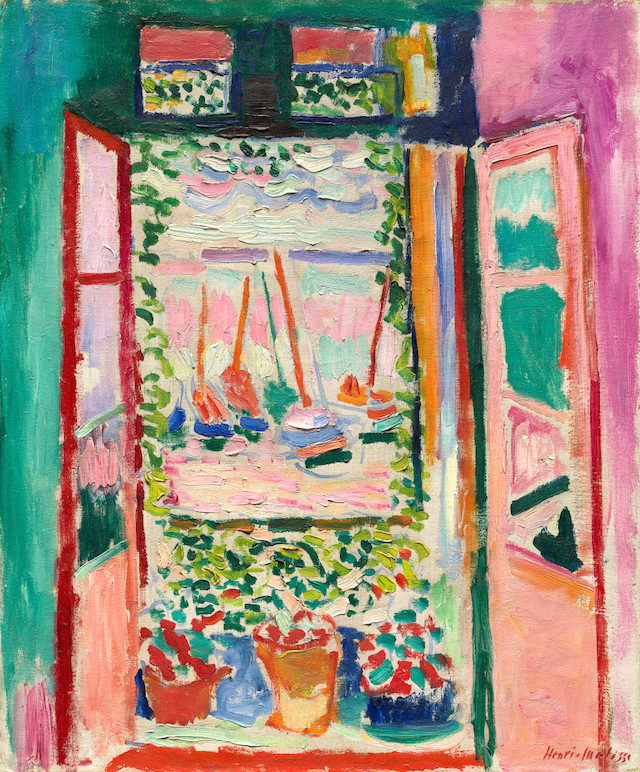
The Open Window
There is a feeling of jollity in the room of Matisse’s The Open Window. Sail boats bob in the harbour, like a pack of eager dogs waiting to be let off their leashes. The French doors are flung at a jaunty angle, welcoming the ocean waves and rustling of the potted plants. The Open Window
paints a bold-coloured picture of an artist’s apartment, with the artist standing back to soak up their own personal oblong of outdoors. And indeed, that is what Matisse was doing; this is the view from his apartment in Collioure, on the Southern coast of France. Painted by the artist in 1905, the mood of this image is further away from that depicted within Hopper’s. If we were to imagine this as a modern-day lockdown scene, we’d possibly see it as the home of someone who is pretty comfortable to be indoors: their days filled with sounds of the radio and smells of home-cooking. The carefree nature of the piece with the window left open, welcoming the outdoors and whatever is out there in it, combines contentedness with an underlying restless energy. The title of the painting itself eludes to the symbolism of the window: full of potential; being within; an invitation. Matisse returned to painting open windows later during his time spent in Nice and Etretat and particularly in his final years in the 1940s.
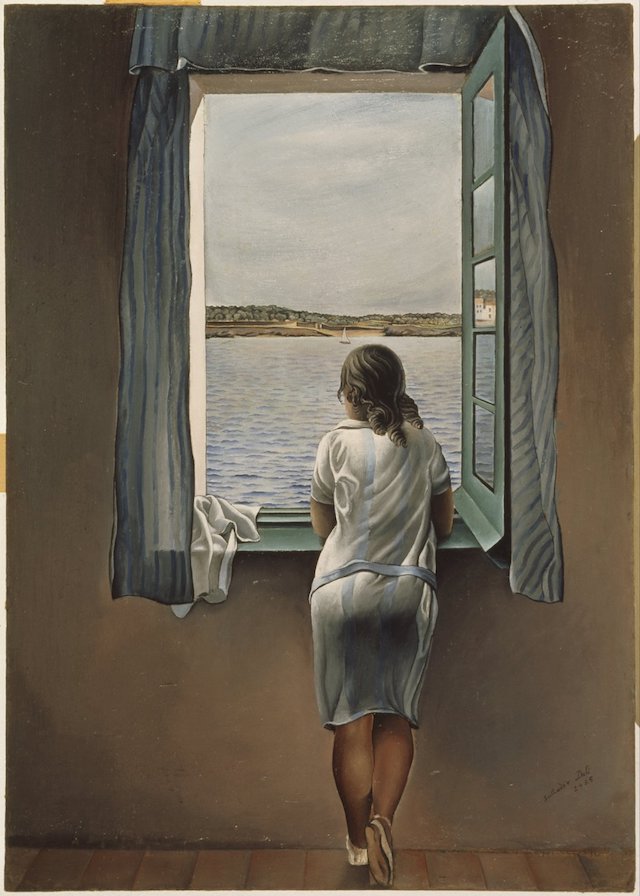
Young Woman at a Window
We know and love Salvador Dali for his melting clocks and the bizarre nightmarish imagery in his paintings. Young Woman at a Window (also known as Figure at a Window), however, is much more subtle in this way, hinting at a different, haunting kind of angst. Lacking the contrasting colours of Matisse, the subdued image was painted by the artist in 1925. It is one of Dali’s earlier pieces. The young woman pictured (who was actually Anna Maria Dali, his sister) faces away from the viewer. She adopts a rather relaxed pose, elbows rested and leaning forward onto one leg. We can’t see her face but we know she is looking out to sea, beyond the horizon. The lack of shore in the foreground gives the impression that the building she is in is floating and there is a bit of a Howl’s Moving Castle vibe to the whole piece.
Unease and uncertainty taint this image, something many of us will have become familiar with in recent weeks and months during the pandemic. We are in a liminal space, a state of transition. At times, it can feel like there is an entire ocean between us and the return to our ‘normal’ lives. The journey across that sea could be a rough one; crashing waves with ups and downs. Or it could be the chance for new discovery. It is a scary thought, but like the young woman at the window, all we can do is look out and wait until the crossing is safe.

The Girl by the Window
Unlike the previous paintings, The Girl by the Window (1893) by Edvard Munch, is set in the dead of night. Similarly though, the subject is female and her face is mostly obscured. Hiding behind the curtain she peers outside, unaware that our gaze and the artist’s is upon her. Let’s put aside the window itself for the moment. What is the significance of the character looking out of it? In the title she is referred to as a ‘girl’, offering an intensified sense of vulnerability: a child who should be asleep, but instead is standing barefoot at the window in her nightgown. Behind her in the purple and brown darkness, there is the suggestion of another figure. Imaginary – a manifestation of her own fear or concern? Or a piece of furniture taking the shape of a man as they often do at night? Apprehension vibrates within the colours. Maybe she has heard some disruption outside, maybe she is waiting for someone to return home or maybe she simply can’t sleep. The mystery within this image is intense, and there is a much more sinister feeling to it than the previous examples. Ultimately though, the piece is grounded by the familiar ‘being inside, looking out’ concept. Whether it is longing or uneasiness, or both, that has brought the girl to the window, there is an anxiety in this image that resonates with our own present times.
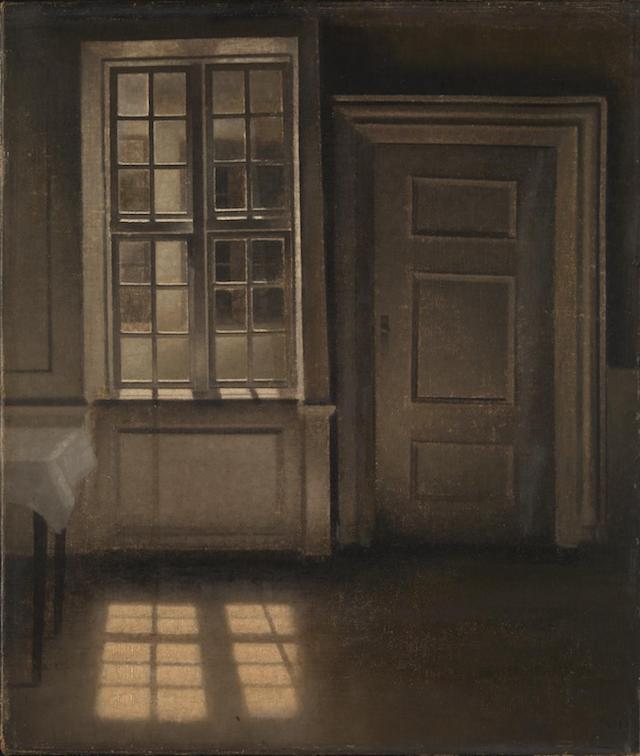
Interior, Sunlight on the Floor
Time forces you to become familiar with things. When you stay in one space for a long time, the details of it ingrain into your memory and become a part of your personal history. The way the sunlight hits the floor in a particular way can become as close as a close friend. Unfortunately though, it can also lead you into resenting things. It doesn’t matter how good of a friend they are, if you were locked in one space with them 24/7 for 30+ days, you might start to begrudge at least some aspects about them. It doesn’t mean you don’t like them. It doesn’t mean you aren’t grateful of their existence. It is just how it is. Danish artist Vilhem Hammershøi may have felt similar after finishing painting Interior, Sunlight on the Floor (1906), a picture of a window in his apartment. Glad to finish, be over with it, done! Still proud of the piece and the monotonous task he endured to complete it, but perhaps he felt more than ready to begin the next one. Something new, something fresh.
However, contrary to these assumptions about Hammershøi and his character, he actually painted near-exact pieces to this one multiple times. There are a number of his works featuring the same window, the same sunlight on the same floor, all with only slight differences and perspective changes. What can we learn from Hammershøi’s commitment to his interior scenes? Although at first this is a mundane sight, with this information in mind it becomes an ode to the everyday. Linking back to Hopper’s Morning Sun, this piece holds the potential for ‘a new day’. Yesterday is history, today is here and tomorrow is coming. Like Hammershøi, we are in the midst of an often monotonous task. And while it is a huge privilege to be amongst those who do get to peer out of our windows and isolate within the comfort of our homes, our endurance is still being challenged and our homes don’t always feel comfortable. We can, however, find solace in that fact that as long as the light shines through our windows, the outdoors still exists, and that on the other side of the glass the world is waiting for us.